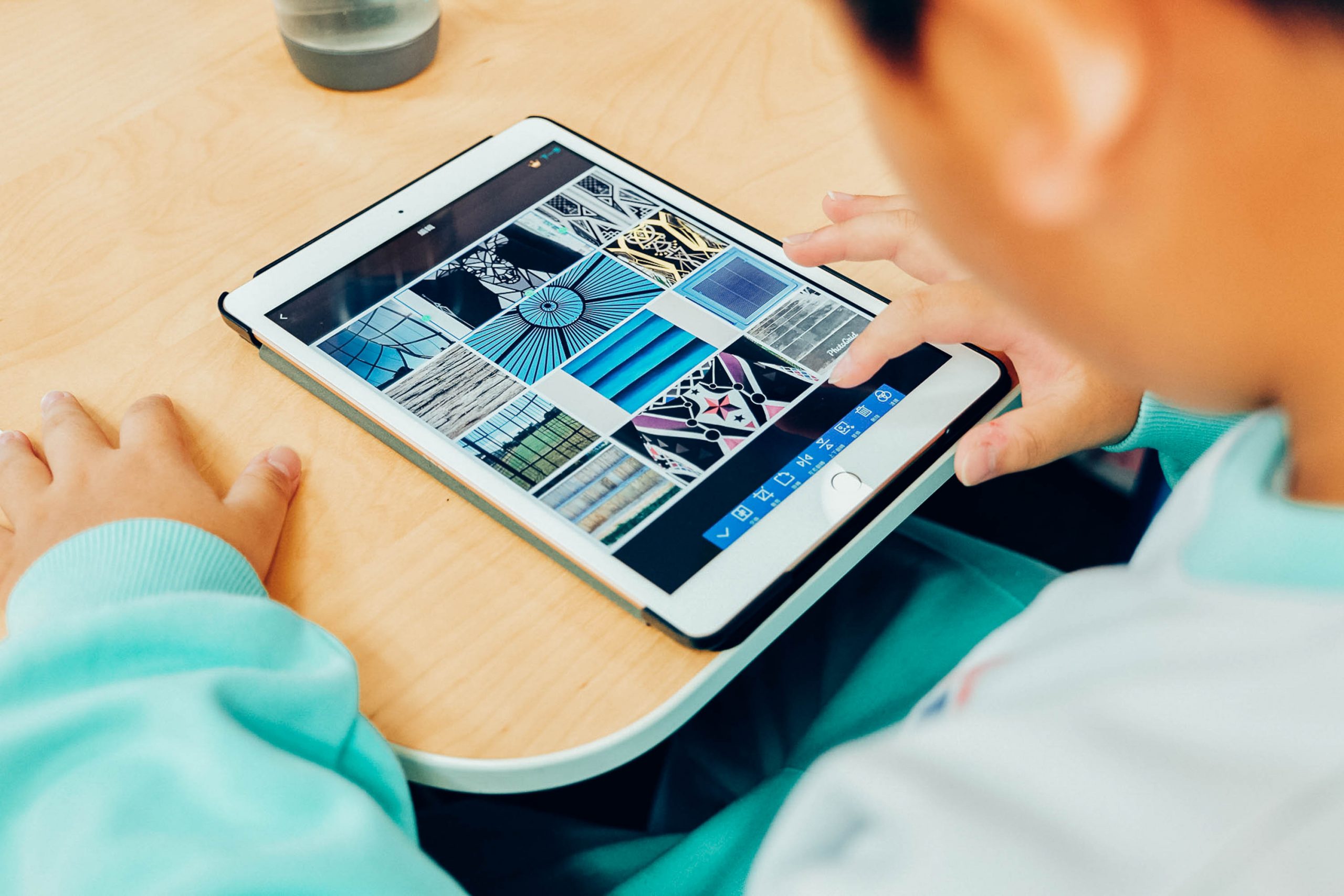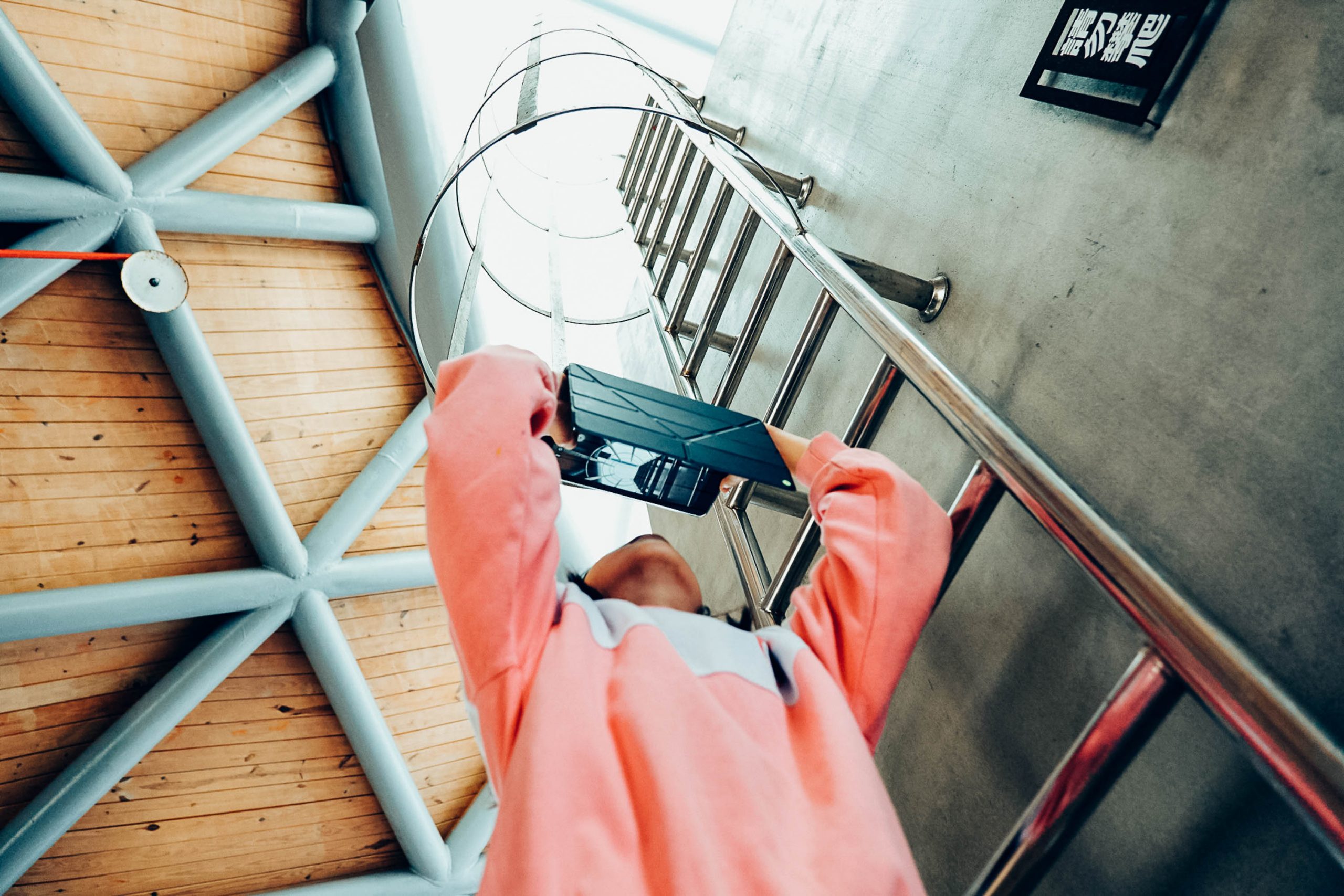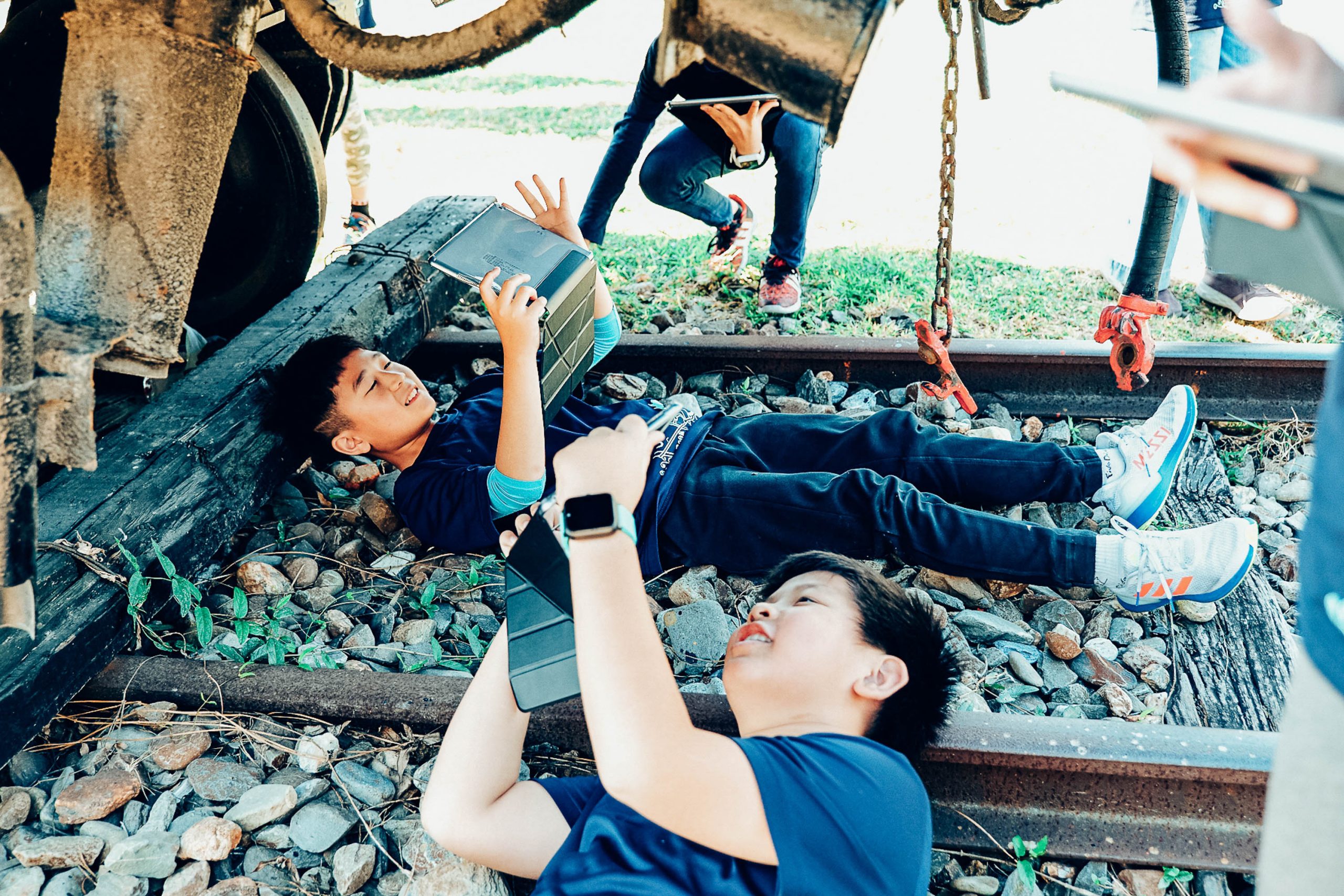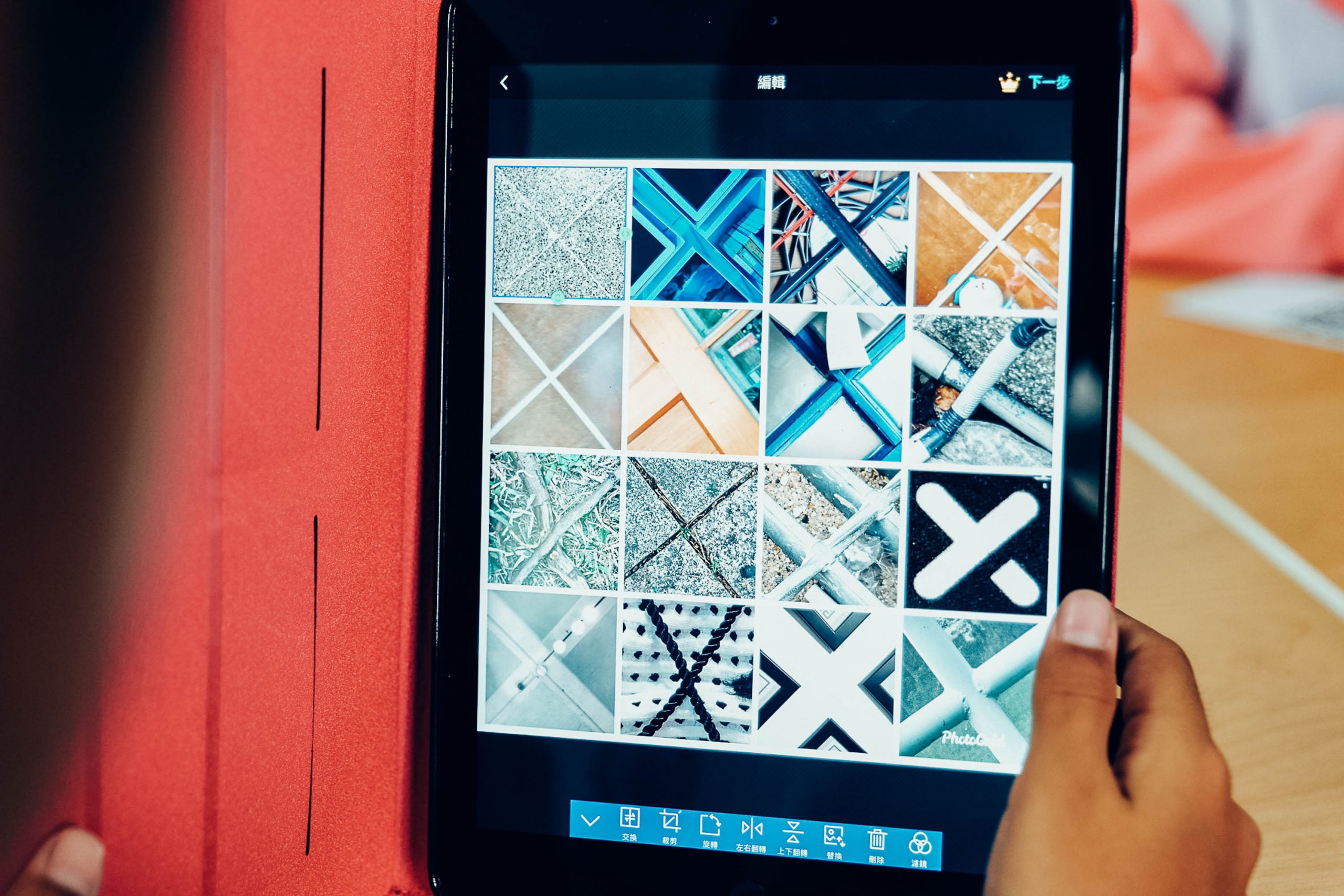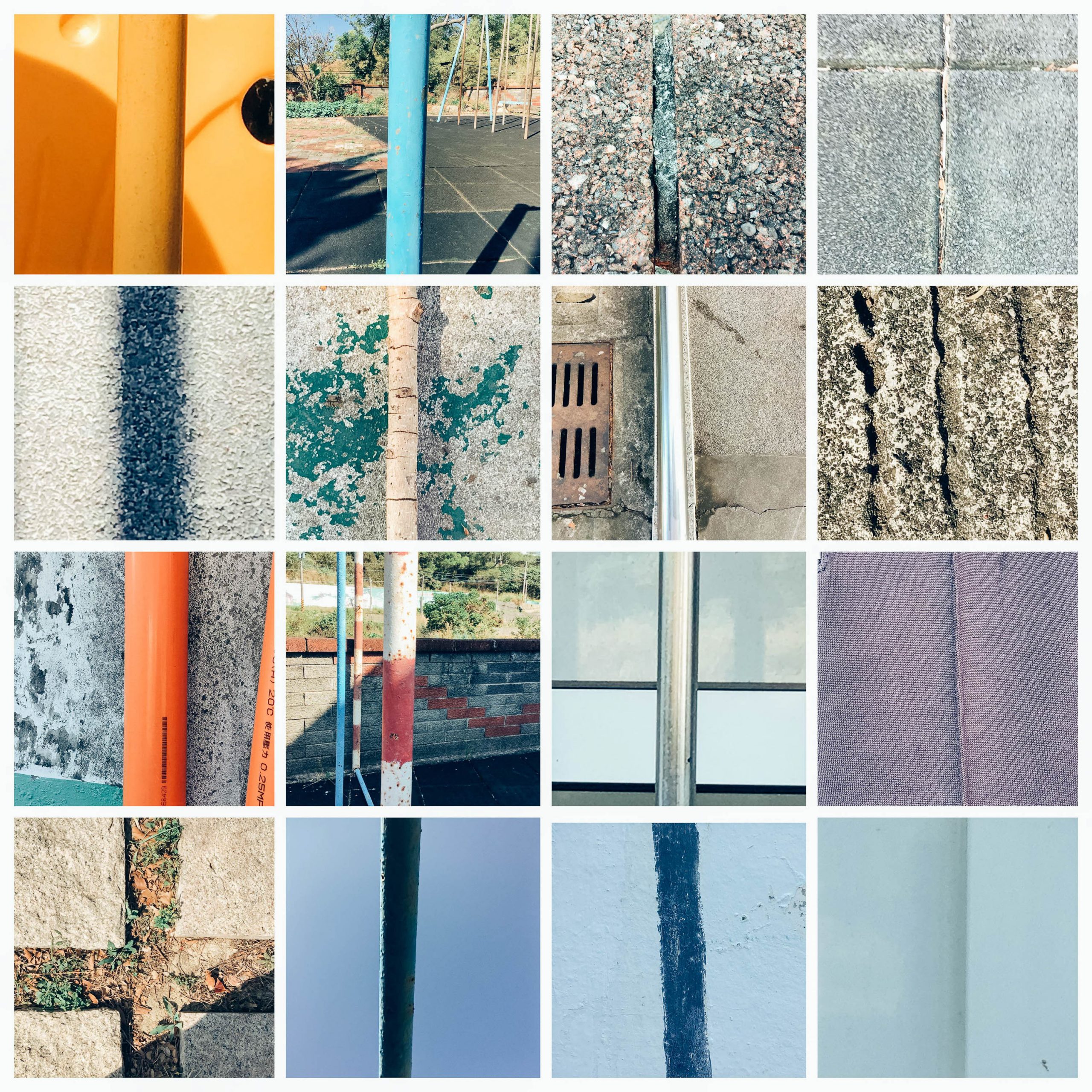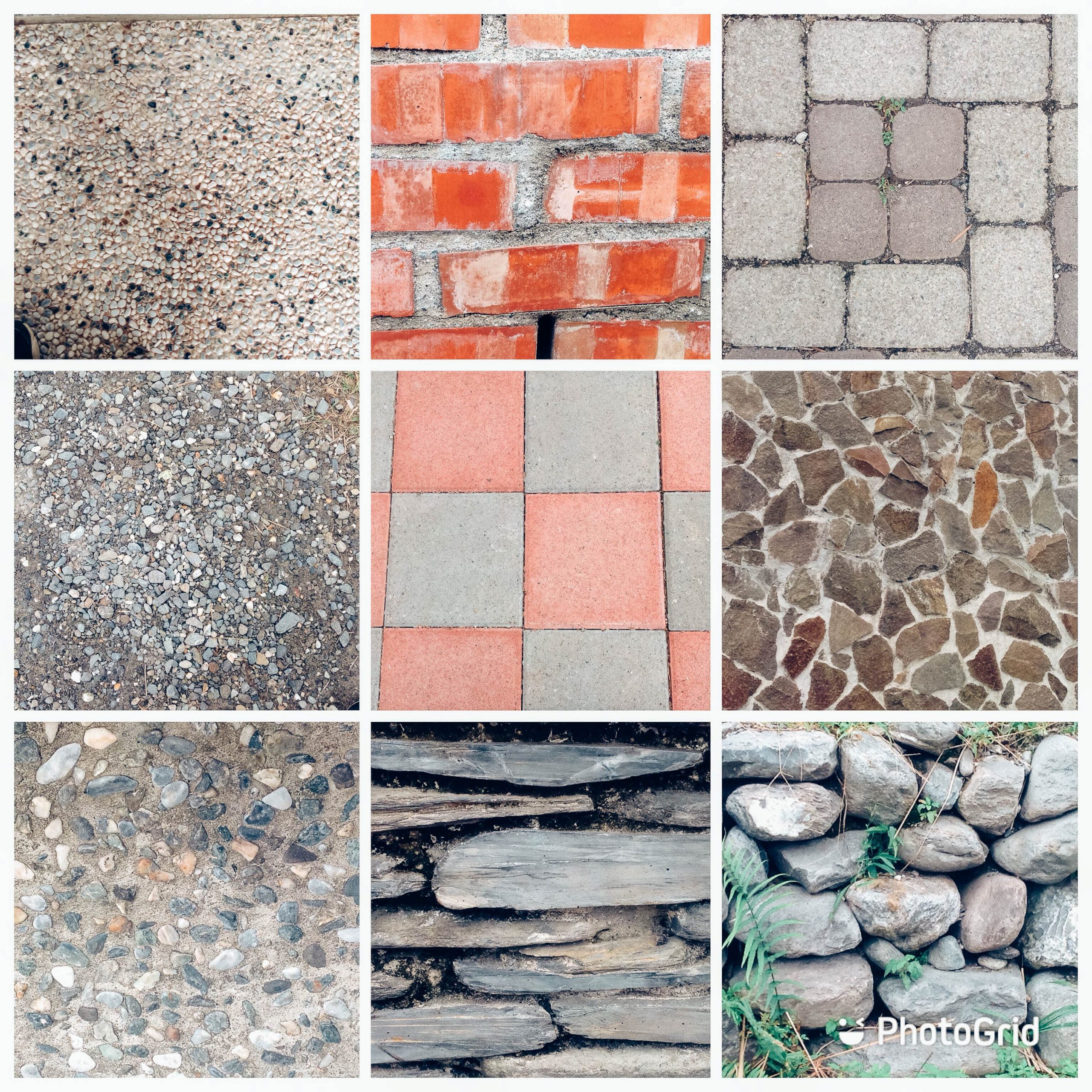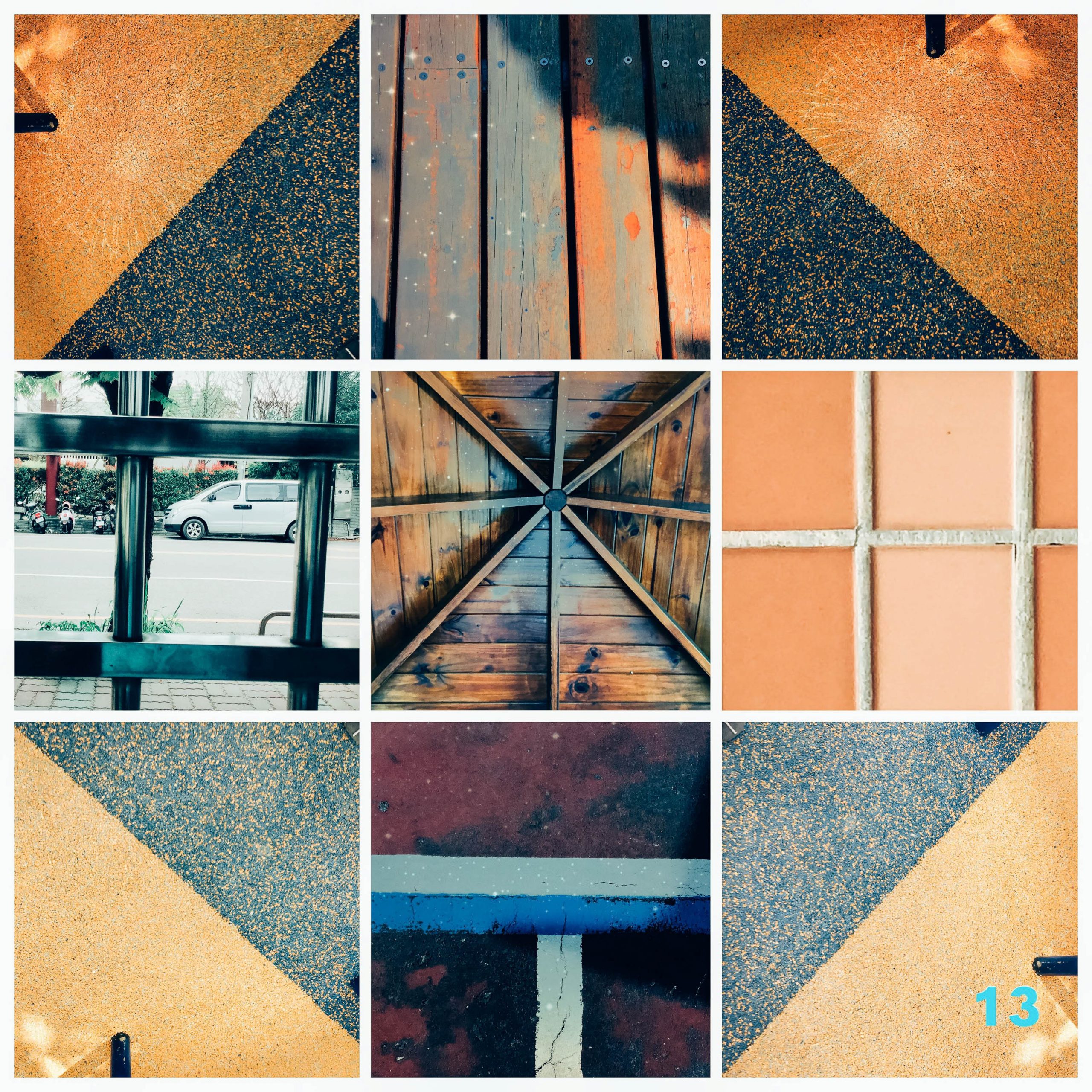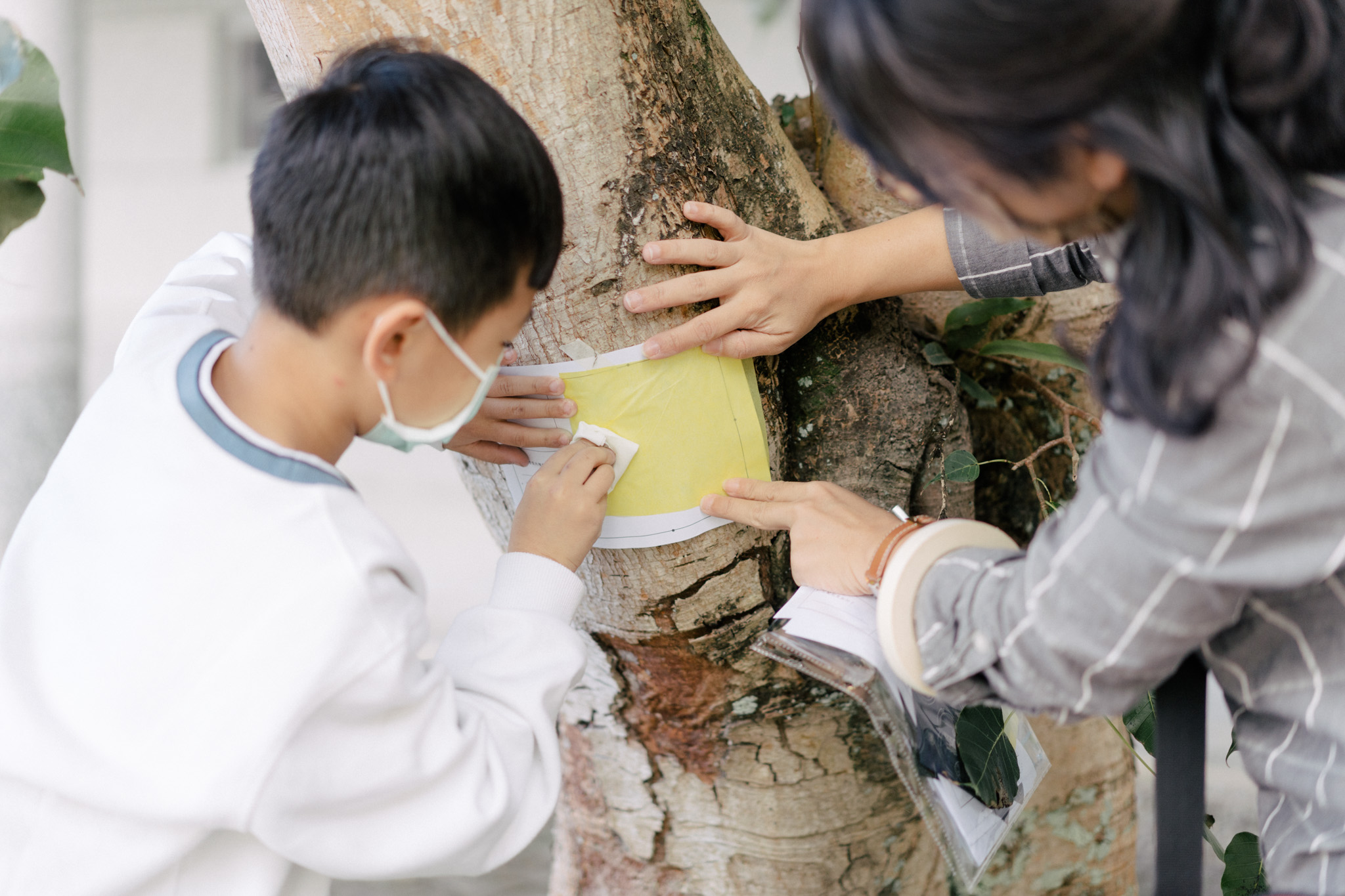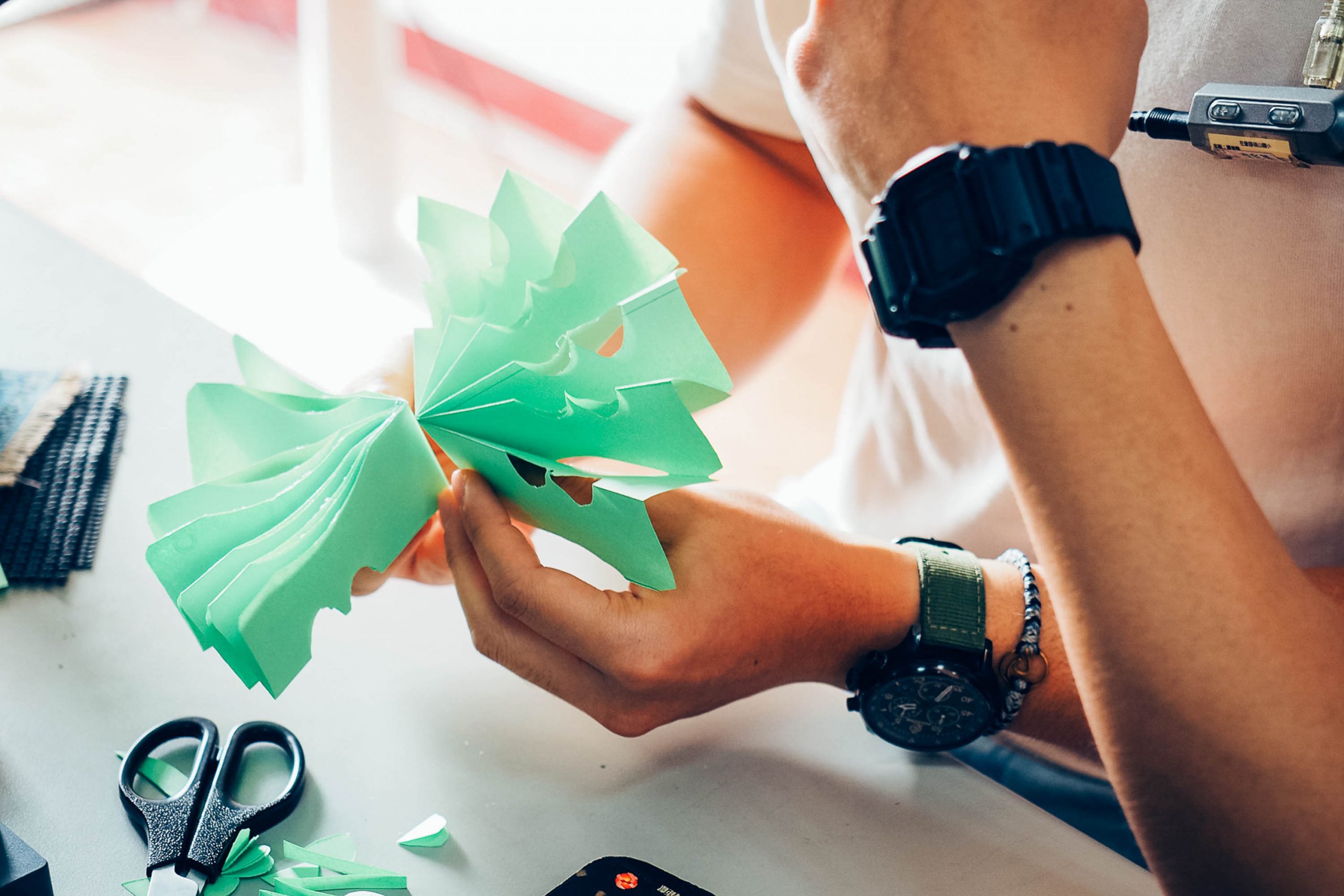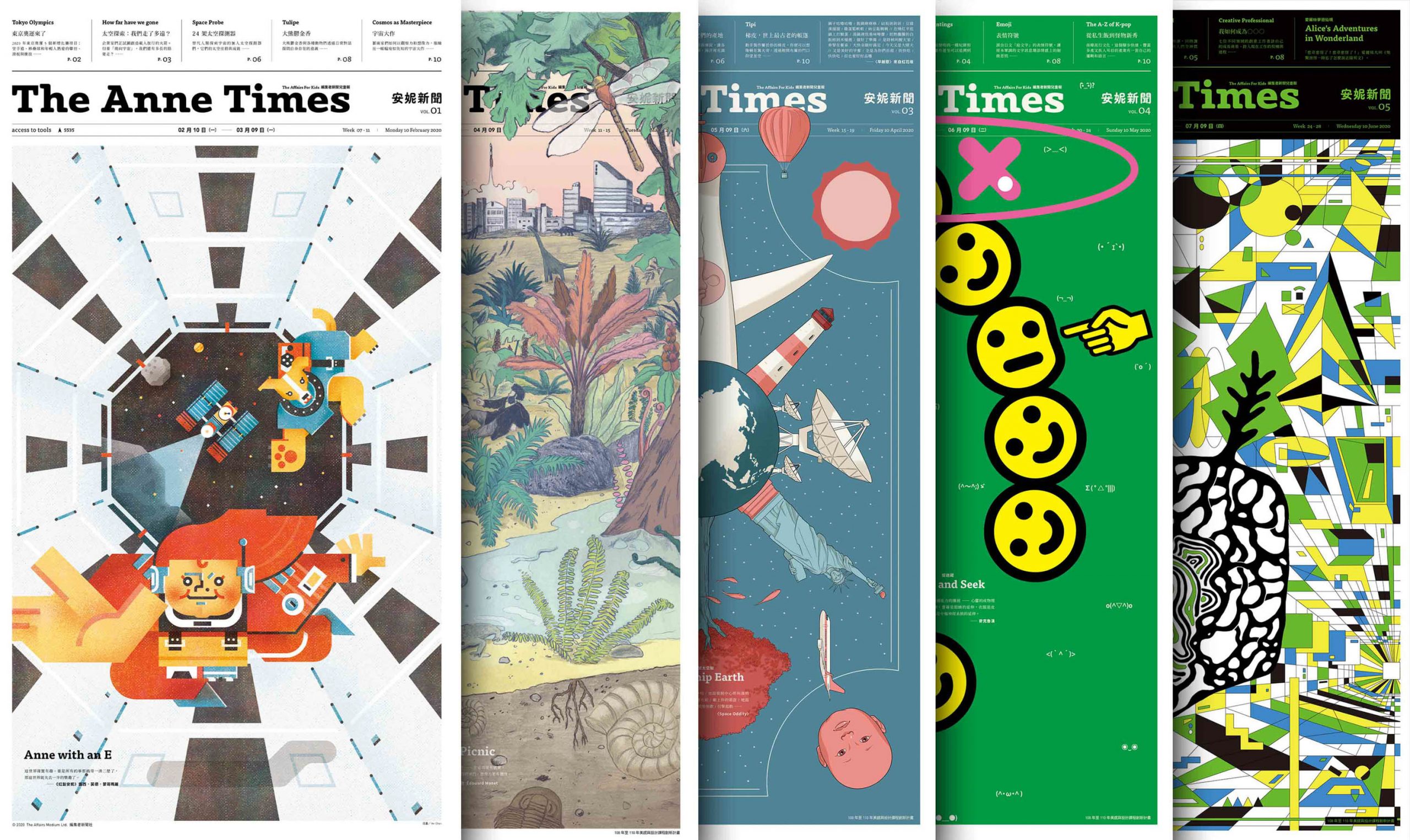Snapshot Montage
The introduction of aesthetic experimental courses began with Snapshot Montage, initially designed for freshman architecture majors at Tunghai University. This exercise involved students searching for common objects or elements in the campus environment, collecting a series of images, and arranging them in photo grids. Besides developing their photo composition skills, students were required to observe environmental details and present their personal interpretations. To adapt the course for younger students, we transformed the concept into a “puzzle,” making the idea of “collage” more familiar and engaging for children.
In early 2020, we conducted experiments and promoted the course in two elementary schools in Taitung City. Initially, we guided the students by asking questions like “Look, what is this?” to encourage them to observe visual elements such as colors, lines, and shapes in their environment, rather than merely identifying objects by name. Using digital devices, specifically tablets, the students captured their own discoveries. Later, in the classroom, they used an image collage application to edit the photos they had taken, creating multiple themed collages. Finally, they uploaded and shared their creations with their classmates.
The advancement of digital tools and sharing services has significantly simplified the process of image editing. As students instinctively manipulated images to create snapshot montages, they also unconsciously engaged in visual recognition, interpretive operations, and narrative expression. This course expanded the learning experience beyond the classroom to the campus environment and further to the digital platform. It not only facilitated students’ observation and collection of materials from their local surroundings, deepening their understanding of their environment, but also encouraged the formation of perceptions related to the environment, arts and design, life, and cultural legacies.
